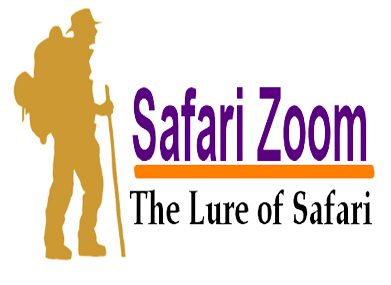How to Become a Successful Trip Designer: A Step-by-Step Guide
Designing trips is an exciting and rewarding career that allows you to craft memorable experiences for travelers. As a trip designer, you will create detailed travel itineraries, coordinate logistics, and ensure that every aspect of the trip meets your clients’ expectations. This step-by-step guide outlines the necessary training, skills, and certifications needed to become a successful trip designer.
Step 1: Understand the Role of a Trip Designer
What Does a Trip Designer Do?
A trip designer, also known as a travel planner or itinerary designer, is responsible for creating personalized travel experiences. This includes:
- Researching destinations: Understanding the best attractions, accommodations, and activities.
- Planning itineraries: Creating detailed daily plans that align with clients’ preferences and budgets.
- Booking travel arrangements: Coordinating flights, hotels, transportation, and activities.
- Providing support: Assisting clients with travel-related issues before and during their trips.
Key Responsibilities
- Client Consultation: Discussing travel preferences, budget, and expectations.
- Customized Itineraries: Tailoring travel plans to suit individual client needs.
- Logistical Coordination: Ensuring smooth transitions between different travel segments.
- On-the-Go Assistance: Offering support and troubleshooting issues as they arise.
Step 2: Acquire Relevant Education and Training
Formal Education
While there is no specific degree required to become a trip designer, relevant education can enhance your credibility and skills. Consider pursuing:
- Bachelor’s Degree: In fields such as Travel and Tourism, Hospitality Management, or Business Administration.
- Travel and Tourism Courses: Specialized courses offered by community colleges or online platforms can provide practical knowledge.
Professional Training
- Travel Schools: Institutions like the International Air Transport Association (IATA) offer training programs in travel and tourism.
- Online Courses: Websites like Teachable, Coursera, Udemy, and LinkedIn Learning offer courses in travel planning, customer service, and destination management.
Step 3: Develop Essential Skills
Research and Planning Skills
- Destination Knowledge: Stay updated on popular travel destinations, emerging trends, and local cultures.
- Organizational Skills: Ability to manage multiple clients and detailed itineraries.
- Attention to Detail: Ensuring every aspect of the trip is meticulously planned and coordinated.
Communication Skills
- Client Interaction: Clear and effective communication to understand client needs and preferences.
- Vendor Negotiation: Building relationships and negotiating with hotels, tour operators, and other service providers.
Technical Skills
- Booking Systems: Proficiency in Global Distribution Systems (GDS) like Amadeus, Sabre, or Travelport.
- Software Skills: Familiarity with travel planning software, CRM systems, and online booking platforms.
Step 4: Gain Industry Experience
Entry-Level Positions
Start your career with entry-level positions in the travel industry, such as:
- Travel Agent: Gaining experience in booking travel arrangements and customer service.
- Tour Coordinator: Assisting in the organization and execution of tours.
Internships and Volunteering
- Travel Agencies: Internships at travel agencies can provide hands-on experience.
- Tour Companies: Volunteering with tour companies or travel-related organizations can expand your industry knowledge.
Step 5: Obtain Relevant Certifications
Certification Programs
Certifications can boost your credibility and demonstrate your expertise. Consider:
- Certified Travel Associate (CTA): Offered by The Travel Institute, this certification covers travel planning, marketing, and customer service.
- Certified Travel Counselor (CTC): An advanced certification from The Travel Institute for experienced travel professionals.
- Destination Specialist (DS): Certification programs focusing on specific destinations e.g Japan Specialist or travel niches.
Continuous Education
Stay current with industry trends and updates by participating in webinars, workshops, and professional development courses.
Step 6: Build a Professional Network
Industry Associations
Join professional associations such as:
- American Society of Travel Advisors (ASTA)
- National Association of Career Travel Agents (NACTA)
- Association of Independent Tour Operators (AITO)
- Trip Designers Network
Networking Events
Attend industry events, trade shows, and conferences to connect with other professionals and potential clients.
Step 7: Create a Portfolio and Online Presence
Portfolio
Develop a portfolio showcasing your expertise and past trip designs. Include:
- Sample Itineraries: Detailed itineraries you have created for clients.
- Client Testimonials: Positive feedback from satisfied clients.
Online Presence
Establish a professional online presence:
- Website: Create a website highlighting your services, expertise, and contact information.
- Social Media: Use platforms like Instagram, Facebook, and LinkedIn to share travel tips, itineraries, and engage with potential clients.
Step 8: Market Your Services
Digital Marketing
- SEO: Optimize your website for search engines to attract organic traffic.
- Content Marketing: Write blog posts, create videos, and share travel guides to showcase your knowledge.
- Personalized travel planning companies, such as Reco by TripAdvisor, Zicasso, and Audley, offer tailored travel experiences by creating custom itineraries based on individual preferences and needs. You can join these companies as a freelancer trip designer or travel specialist.
- Email Marketing: Build an email list and send newsletters with travel deals and tips.
Partnerships
Collaborate with travel influencers, bloggers, and other travel-related businesses to expand your reach. Consider the following partnership strategies:
- Influencer Collaborations: Partner with travel influencers who can promote your services to their audience. This can help you reach a broader and more targeted audience.
- Guest Blogging: Write guest posts for popular travel blogs and websites. This can help you build your reputation and drive traffic to your website.
- Affiliate Marketing: Create an affiliate program where other bloggers and businesses can promote your products and services.
Step 9: Enhance Client Relationships
Personalized Service
Providing personalized service is crucial for building strong client relationships. Take the time to understand each client’s preferences, interests, and travel history. Use this information to tailor itineraries that exceed their expectations.
Follow-Up and Feedback
After the trip, follow up with clients to gather feedback. This not only shows that you care about their experience but also provides valuable insights for improving your services. Use positive feedback as testimonials and address any issues to enhance future trips.
Loyalty Programs
Consider implementing a loyalty program to encourage repeat business. Offer incentives such as discounts on future bookings, exclusive offers, or complimentary services to reward loyal clients.
Step 10: Stay Updated with Industry Trends
Continuous Learning
The travel industry is constantly evolving. Stay informed about new destinations, travel regulations, and emerging trends by reading industry publications, following travel blogs, and participating in webinars and workshops.
Destination Familiarization Trips
Participate in familiarization (FAM) trips organized by tourism boards or travel companies. These trips allow you to experience destinations firsthand, providing valuable insights that can enhance your trip designs and recommendations.
Technology and Innovation
Embrace new technologies and innovations in the travel industry. Stay updated on the latest travel apps, booking platforms, and virtual reality experiences that can enhance your clients’ travel planning process.
Step 11: Diversify Your Services
Niche Markets
Consider specializing in niche markets to differentiate yourself from competitors. Some popular niches include:
- Luxury Travel: Designing high-end, exclusive travel experiences.
- Adventure Travel: Creating itineraries focused on outdoor activities and extreme sports.
- Cultural and Heritage Travel: Curating trips that explore the history and culture of a destination.
- Eco-Tourism: Promoting sustainable travel options that minimize environmental impact.
Group Travel and Corporate Services
Expand your offerings to include group travel and corporate services. Organizing trips for families, schools, corporate retreats, and incentive travel can open up new revenue streams.
Concierge Services
Offer concierge services to provide additional value to your clients. This can include restaurant reservations, event tickets, or personalized recommendations for activities and attractions.
Step 12: Leverage Client Reviews and Referrals
Encourage Reviews
Ask satisfied clients to leave reviews on your website, social media, and travel review platforms such as TripAdvisor or similar site. Positive reviews enhance your credibility and attract new clients.
Referral Programs
Implement a referral program to incentivize existing clients to refer new clients. Offer discounts, bonuses, or other rewards for successful referrals, helping to grow your client base through word-of-mouth marketing.
Step 13: Monitor and Analyze Your Performance
Performance Metrics
Regularly monitor key performance metrics such as conversion rates, client retention rates, and revenue growth. Use analytics tools to track website traffic, social media engagement, and email campaign effectiveness.
Continuous Improvement
Analyze your performance data to identify areas for improvement. Adjust your marketing strategies, refine your trip design processes, and enhance client interactions based on these insights to continually improve your business.
Conclusion
Becoming a successful trip designer requires dedication, continuous learning, and a passion for creating unforgettable travel experiences. By following this comprehensive guide, you can develop the skills, gain the necessary experience, and build a thriving career in the travel industry. Embrace the opportunities for growth, stay updated with industry trends, and always strive to exceed your clients’ expectations. With perseverance and creativity, you can establish yourself as a trusted and successful trip designer, helping travelers explore the world in unique and memorable ways.




